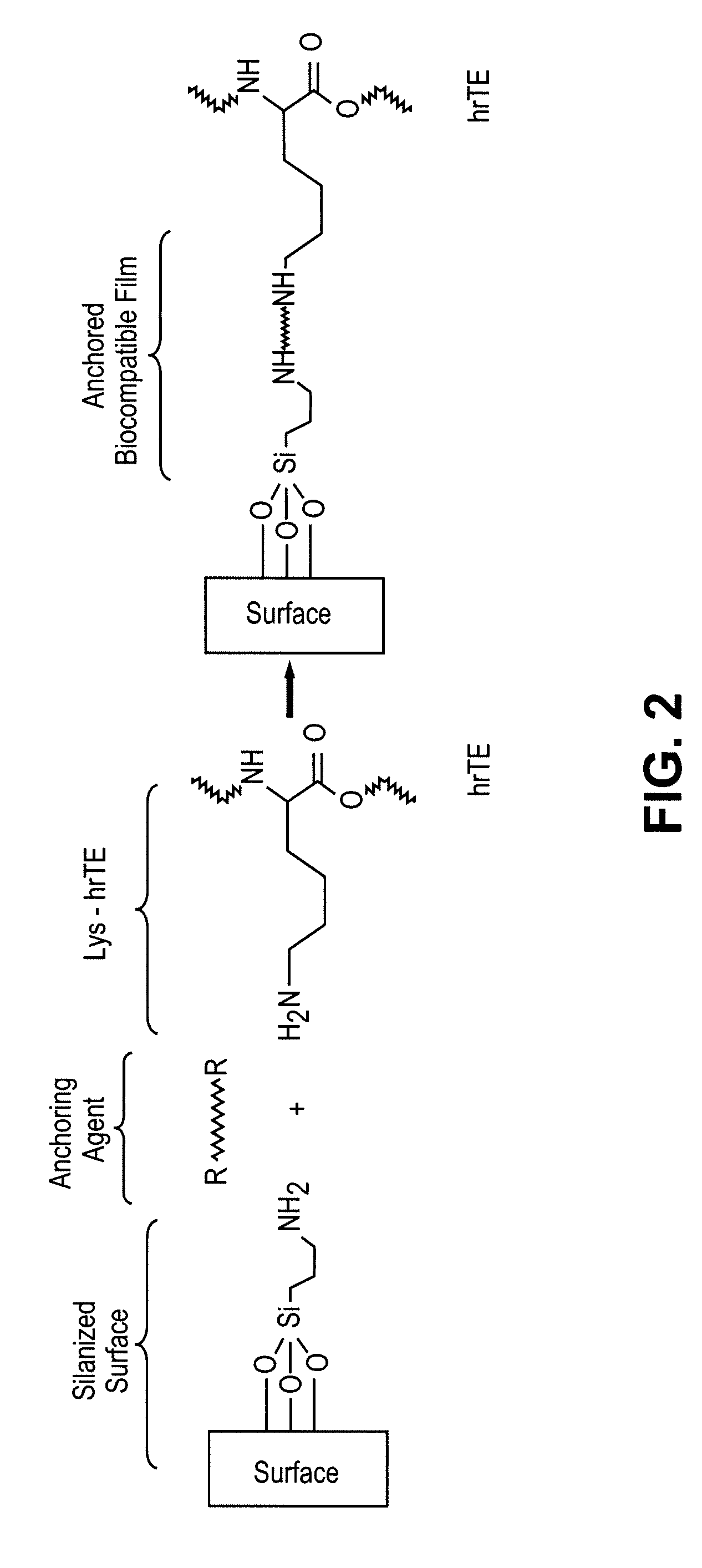Biocompatible coatings for medical devices
a biocompatible coating and medical device technology, applied in the direction of packaging foodstuffs, packaged goods types, pharmaceutical containers, etc., can solve the problems of re-narrowing of the vessel, restriction or blockage of blood flow, and the incidence of device rejection related complications remains significan
- Summary
- Abstract
- Description
- Claims
- Application Information
AI Technical Summary
Problems solved by technology
Method used
Image
Examples
examples
[0037]Plasma Etch Process: Etching of several SS 316L stainless steel stents was performed on a Plasmalab μEtch 300 from Oxford Instruments. The etch chamber was cleaned before placing the stents in the chamber, using the following parameters for the plasma process: CF4 flow rate set to 60 sccm, O2 set to 25 sccm, set pressure at 400 Torr and forward power set to 500 W for 10 minutes. The chamber was then cleaned using the following parameters for the plasma process: O2 flow rate set to 50 sccm, Ar set to 5 sccm, pressure at 200 Torr, and forward power at 800 W, for 60 minutes. The stents were then placed in the chamber. A 10 second etch was performed using the following parameters: O2 flow rate set to 50 sccm, Ar flow rate set to 5 sccm, set pressure at 200 Torr, forward power set to 800 W. The stents were flipped over and a second etch was performed using the following parameters: O2 flow rate set to 50 sccm, Ar flow rate set to 5 sccm, set pressure at 200 Torr, forward power set ...
PUM
| Property | Measurement | Unit |
|---|---|---|
| pressure | aaaaa | aaaaa |
| pass energy | aaaaa | aaaaa |
| pass energy | aaaaa | aaaaa |
Abstract
Description
Claims
Application Information
 Login to View More
Login to View More - R&D
- Intellectual Property
- Life Sciences
- Materials
- Tech Scout
- Unparalleled Data Quality
- Higher Quality Content
- 60% Fewer Hallucinations
Browse by: Latest US Patents, China's latest patents, Technical Efficacy Thesaurus, Application Domain, Technology Topic, Popular Technical Reports.
© 2025 PatSnap. All rights reserved.Legal|Privacy policy|Modern Slavery Act Transparency Statement|Sitemap|About US| Contact US: help@patsnap.com



